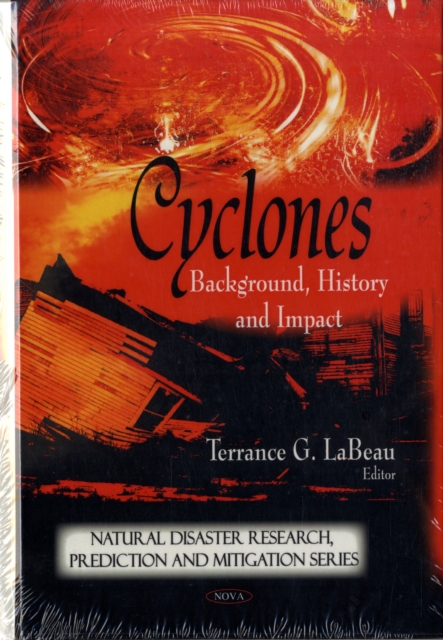
Cyclones : Background, History & Impact Hardback
Edited by Terrance G LaBeau
Hardback
- Information
Description
In meteorology, a cyclone refers to an area of closed, circular fluid motion rotating in the same direction as the Earth[1][2].
This is usually characterised by inward spiralling winds that rotate counter clockwise in the Northern Hemisphere and clockwise in the Southern Hemisphere of the Earth.Cyclogenesis describes the process of cyclone formation and intensification.
Extratropical cyclones form as waves in large regions of enhanced midlatitude temperature contrasts called baroclinic zones.
Weather fronts separate two masses of air of different densities and are associated with the most prominent meteorological phenomena.
Air masses separated by a front may differ in temperature or humidity.
Strong cold fronts typically feature narrow bands of thunderstorms and severe weather, and may on occasion be preceded by squall lines or dry lines.
They form west of the circulation centre and generally move from west to east.
Warm fronts form east of the cyclone centre and are usually preceded by stratiform precipitation and fog.
They move poleward ahead of the cyclone path. Occluded fronts form late in the cyclone life cycle near the enter of the cyclone and often wrap around the storm centre.
Information
-
Out of StockMore expected soonContact us for further information
- Format:Hardback
- Pages:269 pages, Illustrations, unspecified
- Publisher:Nova Science Publishers Inc
- Publication Date:04/01/2009
- Category:
- ISBN:9781606920640
£115.99
£66.48
Information
-
Out of StockMore expected soonContact us for further information
- Format:Hardback
- Pages:269 pages, Illustrations, unspecified
- Publisher:Nova Science Publishers Inc
- Publication Date:04/01/2009
- Category:
- ISBN:9781606920640